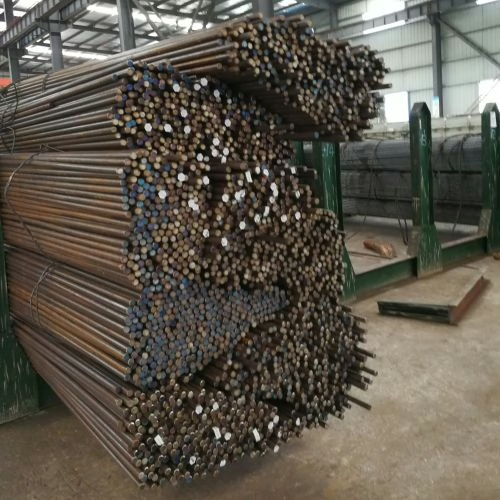ASTM A36 Carbon Structural Steel: Properties and Applications
ASTM A36 steel is the standard specification for a widely used carbon structural steel. You’ll find it in numerous construction applications, including buildings, bridges, and other general structural projects. The core requirement defined by the ASTM A36 standard is its minimum yield strength: 36 ksi (kilopounds per square inch), which translates to 250 MPa (megapascals).

1. A36 Steel Mechanical Properties
Understanding the mechanical strength of A36 is crucial for proper application:
- Tensile Strength: Typically falls within the range of 58 ksi to 80 ksi (400 MPa to 550 MPa).
- Yield Strength: Minimum 36 ksi (250 MPa).
- Elongation: This measures ductility. For structural shapes, it’s generally 21% to 23% in 2 inches (50 mm). It’s around 20% in 8 inches (200 mm) for plates, varying slightly with thickness.
2. A36 Steel Chemical Composition
The chemical makeup of A36 steel is controlled within specific limits per the ASTM standard:
- Carbon (C): Max 0.26% for Shapes & Plates; Max 0.29% for Bars.
- Manganese (Mn): 0.80-1.20% for Shapes & Plates; 0.60-0.90% for Bars. Note: Content, particularly C and Mn, may be adjusted for thicker sections to ensure consistent strength.
- Silicon (Si): Max 0.40%.
- Phosphorus (P): Max 0.040%.
- Sulfur (S): Max 0.050%.
- Copper (Cu): When specified for enhanced atmospheric corrosion resistance, a minimum of 0.20% is often required.
3. A36 Steel Available Forms and Common Applications
A36 steel is a versatile material supplied in various forms:
- Plates
- Bars
- Structural Shapes (like I-beams, angles, channels)
Its reliable performance makes it suitable for:
- General building frames and structures.
- Bridge components.
- Base plates.
- Welded tanks (often with specific requirements, e.g., for water storage, potentially needing modified A36).
- Anchor bolts (mild steel applications).
While newer high-strength steels (like ASTM A992) are frequently used in modern building construction, A36 steel has a long track record. It remains a dependable and economical choice for many structural needs when designed and fabricated correctly.
4. A36 Steel Weldability Considerations
A36 steel is readily weldable. However, successful welding requires attention to detail:
- Use Proper Procedures: Employ qualified welding techniques suitable for the thickness and joint design.
- Filler Metal Selection: Choose welding consumables (rods, wire) that meet or exceed the minimum strength requirements of A36 steel.
- Potential Overstrength: A36 often exhibits actual strength slightly higher than the specified minimum. It can be prudent to design weld sizes based on slightly higher strength assumptions (similar to those for Grade 50 steels) for critical welds to ensure adequate joint performance.
5. A36 Steel Durability and Design Factors
- Fracture Resistance: A36 has a higher ductile-to-brittle transition temperature than some specialized structural steels, but its extensive use demonstrates reliable performance against brittle fracture under normal service conditions when designed appropriately. Avoid sharp notches, high stress concentrations, and unusually low service temperatures.
- Lamellar Tearing: The possibility of lamellar tearing should be evaluated during design in joints where tension might be applied through the thickness of a plate.
6. Specification Details
When ordering or specifying A36 steel:
- Full Designation: Refer to the full standard “ASTM A36”.
- Specify Form: Clearly state the required product form (plate, bar, shape) and dimensions.
- Additional Requirements: Note any special requirements (e.g., specific killing practice for tank applications, copper addition for corrosion resistance).
- Context Matters: The use of specific components like bearing plates or rods may be governed by particular clauses within the A36 standard or related design codes.
7. Equivalent Grades
Explore Our Other Products
D2/1.2379/SKD11
D3/1.2080/SKD1
D6/1.2436/SKD2
A2/1.23663/SKD12
O1/1.2510/SKS3
O2/1.2842
S1/1.2550
S7/1.2355
DC53
H13/1.2344/SKD61
H11/1.2343/SKD6
H21/1.2581/SKD7
L6/1.2714/SKT4
M2/1.3343/SKH51
M35/1.3243/SKH55
M42/1.3247/SKH59
P20/1.2311
P20+Ni/1.2738
420/1.2083/2Cr13
422 stainless steel
52100 bearing steel
440C stainless steel
4140/42CrMo4/SCM440
4340/34CrNiMo6/1.6582
4130
5140/42Cr4/SCR440
SCM415
✅ Get Instant Quote for A36 Carbon Steel – Fast Delivery & Factory Price!
Looking for high-quality A36 carbon steel at competitive prices?
You’re in the right place.
👉 Why Choose Aobo Steel?
🔧 Direct Manufacturer – No middleman, lower cost
🚛 Fast Shipping – Quick delivery from stock or customized production
📄 Mill Test Certificate Provided – Full traceability and quality assurance
📞 Expert Support – Speak with our engineers and sales team within 12 hours
